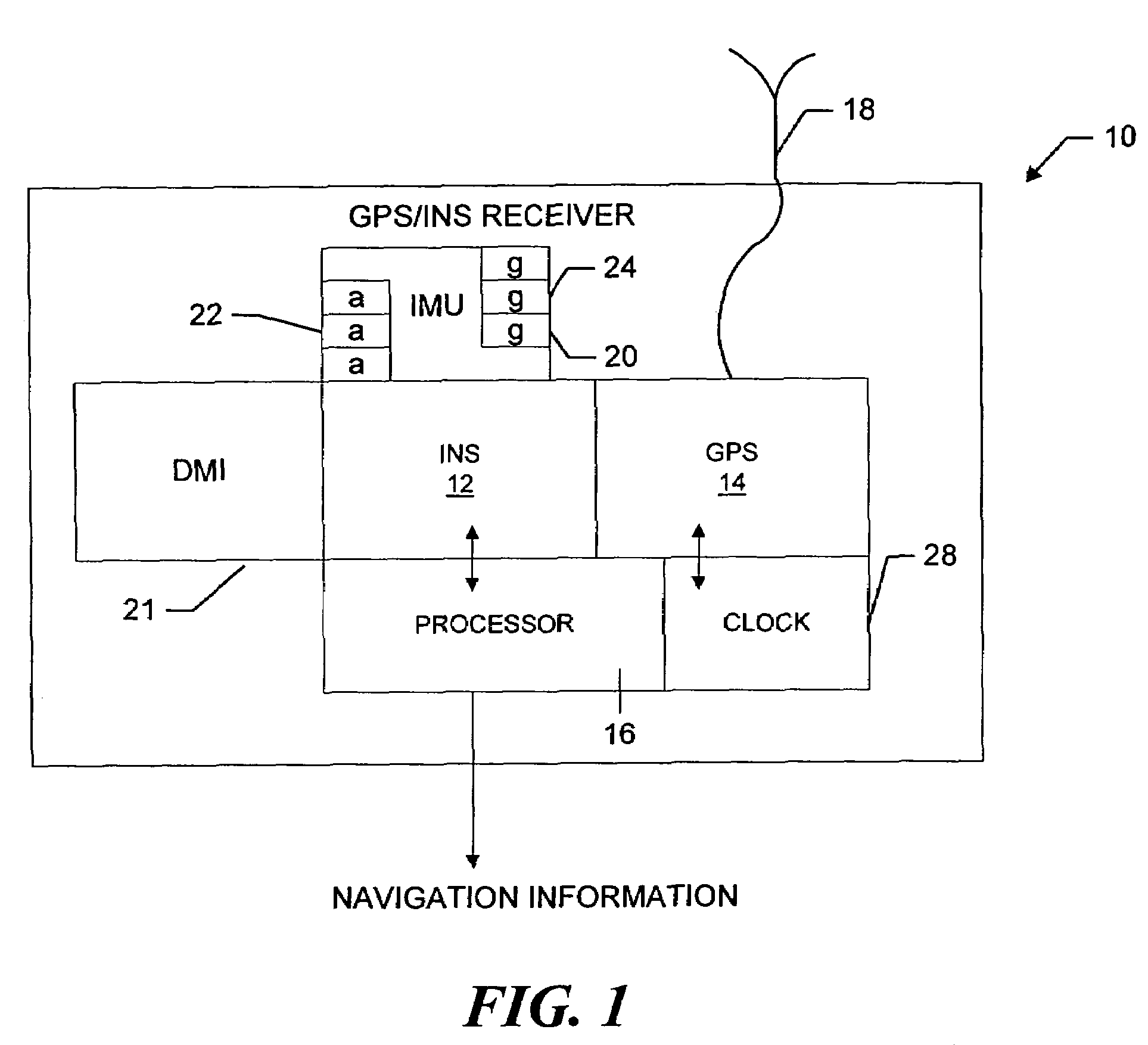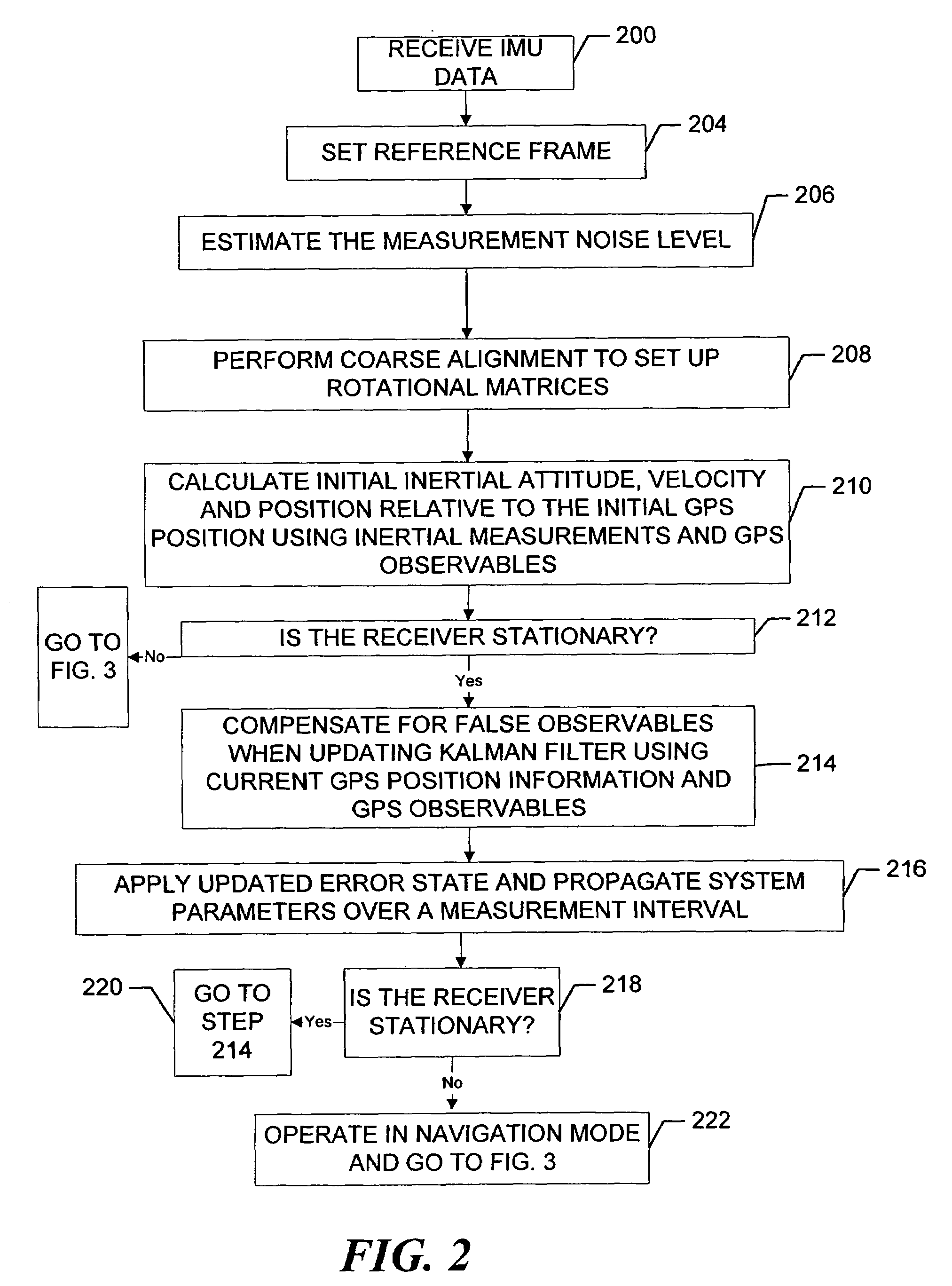Inertial GPS navigation system with modified kalman filter
a navigation system and filter technology, applied in the field of gps receivers, can solve the problems of satellite signals detrimental to use, gps receivers may not calculate position information, gps satellites may become unavailable to gps receivers, etc., to speed up gps satellite signal re-acquisition and associated ambiguity resolution operations, and eliminate the effect of system dynamics
- Summary
- Abstract
- Description
- Claims
- Application Information
AI Technical Summary
Benefits of technology
Problems solved by technology
Method used
Image
Examples
Embodiment Construction
[0022]Referring now to FIG. 1, a GPS / INS receiver 10 includes an INS sub-system 12 and a GPS sub-system 14 that operate under the control of a processor 16, to calculate GPS position and INS position, velocity and attitude information. The GPS subsystem processes the satellite signals received over an antenna 18. The INS sub-system receives measurements from an inertial measuring unit (“IMU”) 20 that reads data from orthogonally positioned accelerometers 22 and gyroscopes 24. In addition, the INS sub-system may receive data from a distance measurement indicator (“DMI”) 21, such as a wheel pick-off (not shown). The data from the IMU and, as appropriate, from the DMI, are time tagged with the GPS time maintained by a GPS-time clock 28, as discussed in more detail below, such that the two sub-systems can reliably interchange position-related information that is synchronized in time. The two subsystems operate together, through software integration in the processor 16, to provide positi...
PUM
 Login to View More
Login to View More Abstract
Description
Claims
Application Information
 Login to View More
Login to View More - R&D
- Intellectual Property
- Life Sciences
- Materials
- Tech Scout
- Unparalleled Data Quality
- Higher Quality Content
- 60% Fewer Hallucinations
Browse by: Latest US Patents, China's latest patents, Technical Efficacy Thesaurus, Application Domain, Technology Topic, Popular Technical Reports.
© 2025 PatSnap. All rights reserved.Legal|Privacy policy|Modern Slavery Act Transparency Statement|Sitemap|About US| Contact US: help@patsnap.com



